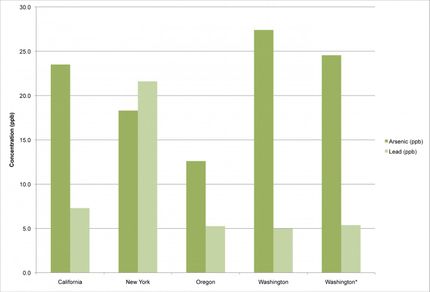Study finds conditions tough for agrochemical innovation
Plant protection R&D costs rise 68.4% in a decade
Advertisement
A new study of Research and Development (R&D) within the crop protection sector shows that, in a decade, the costs associated with the discovery, development and registration of new crop pest and disease agents have increased by 68.4 per cent to €189m. The research, conducted by agribusiness consultant Phillips McDougall and commissioned by Crop Life America and the European Crop Protection Association (ECPA), sheds new light on the costs of agrochemical innovation encountered by major R&D driven companies.
The survey shows that the process leading to the authorization of a new agrochemical molecule is complex, costly and time consuming with particularly steep rises in the development costs of toxicology and environmental chemistry. It takes an average of 9.8 years between the first research tests and authorisation of the product. “Despite the EU’s Strategy 2020 aspiration to ’grow innovation’, the reality for our industry is quite the opposite... It is becoming very hard to justify agrochemical R&D in the EU. At the same time, if we consider that the need for agricultural innovation is urgent and crucial to facing critical global challenges like food security, invasive species and climate adaptation, we can see that such a lengthy time line and high cost certainly impedes a rapid response” said Friedhelm Schmider, Director General of ECPA.
Total Research & Development expenditure for the companies surveyed in 2007 was €1701m, amounting to 6.7% of the agrochemical sales of these businesses.. “Innovation is the heart and soul of our industry and its cost has increased significantly. We are engaged in a constant quest to improve our contribution to maintaining the food supply. Without advanced pest management, roughly 50% of today’s food crop production would be destroyed by pests and disease.” explained Schmider.
Before any product is put on the market, all components undergo exhaustive laboratory and field tests. In addition, companies must anticipate the changing regulatory thresholds their products are likely to meet at the moment they stand for authorisation. “The best thing legislators can do to foster innovation in our sector is to establish a science-based regulatory framework and develop policy grounded in the reality of agriculture and what R&D can actually achieve.” added Schmider.
Overall expenditure on agrochemical R&D by the companies surveyed is expected to increase a further 26.4% between 2007 and 2012, with increases spread across the entire spectrum of the R&D process.
Most read news
Organizations
Other news from the department business & finance

Get the chemical industry in your inbox
By submitting this form you agree that LUMITOS AG will send you the newsletter(s) selected above by email. Your data will not be passed on to third parties. Your data will be stored and processed in accordance with our data protection regulations. LUMITOS may contact you by email for the purpose of advertising or market and opinion surveys. You can revoke your consent at any time without giving reasons to LUMITOS AG, Ernst-Augustin-Str. 2, 12489 Berlin, Germany or by e-mail at revoke@lumitos.com with effect for the future. In addition, each email contains a link to unsubscribe from the corresponding newsletter.





























































